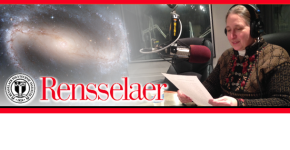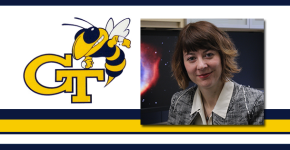Category: Astronomy
-

Heidi Newberg, RPI – The Size of the Galaxy
This universe of ours is pretty big, and it might be bigger than we think. Heidi Newberg, astronomer and physicist at Rensselaer Polytechnic Institute, is studying the size of the galaxy. Dr. Heidi Newberg has worked in many areas of astronomy over the course of her career. She did her Ph.D. with the Berkeley Automated…
-

RPI’s Heidi Newberg records at WAMC
If there are ripples, then it looks like the number of stars in the (presumed flat) disk drops off quickly, and then farther out where the disk ripples back up it looks like a detached ring of stars appears,” Dr. Heidi Newberg, professor of physics, applied physics, and astronomy at Rensselaer Polytechnic University in Troy,…
-

Paul Matthew Sutter, Ohio State – Dark Energy
Paul Matthew Sutter is becoming a regular fixture on the WAMC airwaves having previously offered a fascinating piece on cosmological nothingness and talking with Bob Barrett on The Best of Our Knowledge last week. Today on The Academic Minute, Dr. Sutter, astronomer and physicist at Ohio State University, profiles dark energy. Dr. Paul Matthew Sutter…
-

Ahmed Farag Ali – Big Bang Singularity
Is it possible that the universe had no beginning? New research from a team of physicists is questioning some Big Bang theories. Ahmed Farag Ali, a professor with many academic affiliations, discusses his findings. Ahmed Farag Ali, got his PhD in 2012 from University of Lethbridge, Canada and got in 2007 the ICTP Diploma from…
-

Brad Hansen, UCLA – Finding Exo-Planets via The Transit Method
The search for life outside of our own solar system continues. Brad Hansen, physicist and astronomer at UCLA, explores a new method for locating habitable planets in deep space. Brad Hansen is a professor of physics and astronomy at The University of California Los Angeles. His principal research interest is the search for habitable extra-solar…
-

Ron Mallett, UCONN – Theories of Time Travel
Are we getting closer to achieving time travel? According to Ron Mallett, the answer is theoretically yes. As we near the 100th anniversary of Einstein’s Theory of General Relativity, Dr. Mallet, a research professor of physics at UCONN, offers this inspiring account of studying time travel. Professor Ronald L. Mallett received his B.S., M.S.…
-

Paul Matthew Sutter, Ohio State – Cosmological Nothingness
The concept of nothingness is very different in outer space. Paul Matthew Sutter, a theoretical physicist at The Ohio State, discusses nothing through the lens of cosmology. Dr. Paul Matthew Sutter is the INFN Fellow in Theoretical Physics at the Astronomical Observatory of Trieste and Visiting Scholar at Ohio State University. Paul received his Ph.D.…
-

Dan Baker, University of Colorado – Inclement Space Weather
We’ve come very close to an interstellar calamity. Dr. Daniel Baker, a physicist at UC Boulder, is studying the dangerous weather patterns of outer space. Dr. Daniel N. Baker is Director of the Laboratory for Atmospheric and Space Physics, University of Colorado – Boulder and is Professor of Astrophysical and Planetary Sciences and Professor of…
-

Tamara Bogdanovic, Georgia Tech – Tidal Disruption
We’re learning more and more about black holes every day. Tamara Bogdanovic, a professor of physics at Georgia Tech, are using advanced supercomputers to make predictions about the behavior of black holes. Dr. Tamara Bogdanovic is an Assistant Professor at the Georgia Tech School of Physics and a member of the Center for Relativistic Astrophysics.…

